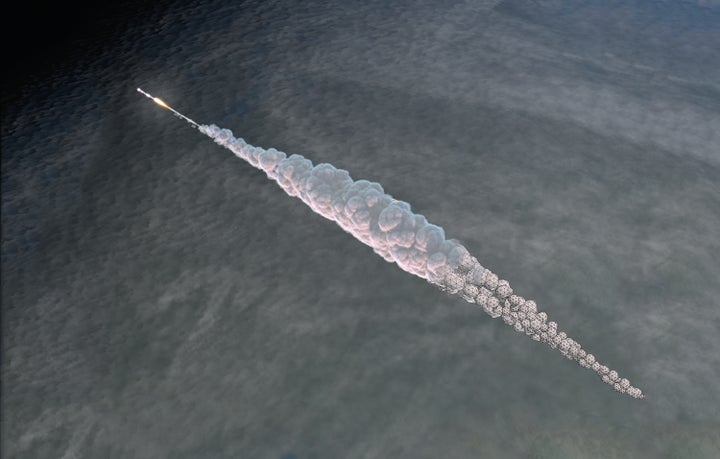Five years ago, residents of the Siberian city of Chelyabinsk, nearby villages, and surrounding countryside witnessed an extraordinary event. What they experienced changed the way we think about destruction from the heavens. As February 15, 2013 dawned, the sun peeked above the southeastern horizon as it always does on cold clear winter mornings. But this time another light unexpectedly appeared above it. It brightened rapidly and silently raced westward.
Stoic Russians ignored it at first. They went about their business: driving to work, listening to music, and walking across streets. But it soon caught the attention of everyone who were under its path. The glow became otherworldly, bathing the landscape and city in an eerie light they had never seen. The sun paled in the distance as sharp-edged shadows raced across sparkling blue-white snow. Glare flashed off surrounding objects.
Some felt its heat as if standing next to a furnace. Others were temporarily blinded. Then it slowed and faded into the other side of the sky. It was gone as quickly as it had appeared. Disoriented residents blinked through the camera-flashbulb spots in their eyes to see giant billowing double-trail clouds above them in the blue. Those who were indoors rushed to the nearest window to have a look.
Before they had time to comprehend the visual spectacle, they were shaken by a terrifying blast that seemed to come from a nearby explosion. Glass shattered and sharp blades shot into buildings, piercing flesh and raining down on streets. Booms and pops continued like rapid gunfire, echoing in the background. Birds took to the air and dust rose from blown-out windows.
It wasn’t the beginning of World War III, but it must have felt so to the shocked, the injured, and the frightened. Many worried that it wasn’t over. Some lost power or phone connections. This was clearly not a drill.
The dust settled, the cuts were stitched, and the windows were replaced. It wasn’t an attack, it was a warning from the heavens. Asteroids are dangerous!

The asteroid explosion over Chelyabinsk came as a surprise to those on the ground, but the scientific community had already warned that such an event was inevitable. We just didn’t know when or where. Only three years earlier, the US National Academies published the report “Defending Planet Earth” which cautioned that small asteroids can be very destructive, and recommended that astronomical surveys should attempt to detect as many as possible in an effort to find anything that might be on an collision course.
The day after the explosion, I was asked to travel to Chelyabinsk with a documentary crew and have the opportunity to collect data that would help my colleagues determine how big the asteroid was and where it came from. We concluded that it was only about 20 metres in diameter and in an orbit that caused it to come from the direction of the Sun. It was far too small to be reliably detected with current Earth-based surveys, even if it had come from the night sky. The only way to guarantee that the next Chelyabinsk meteor will be found in advance would be to have a telescope in space.
A year later, Asteroid Day was founded by astronomer and musician Dr. Brian May and filmmaker Grigorij Richters, who recruited astronauts, scientists and celebrities worldwide to join in signing a declaration calling for an increase in the asteroid discovery rate by a factor of 100.
We know that another asteroid is on its way to impact, but we still don’t know when or where. It could be headed toward your city this time.
To learn more about dangerous asteroids and impacts, come to European AstroFest in London on Feb. 9-10, 2018 where the author will be giving presentations called “Fire in the Sky” and ”Fire on the Ground”. If you have a questions, please write to the Asteroid Day Expert Panel. And tune in to the Asteroid Day broadcast on June 29, 2018!
